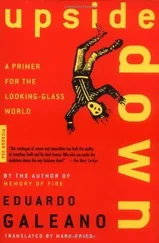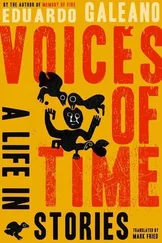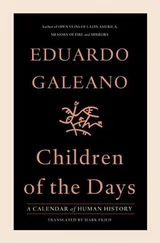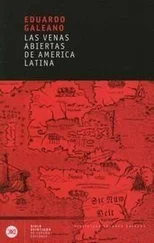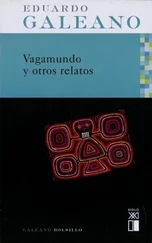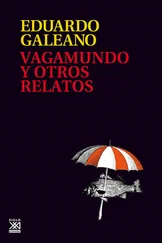the head-flattening tourniquet,
the bone-breaking pendulum,
the seat of pins,
the long needle that perforated the devil’s moles,
the iron claw that shredded flesh,
the pincer and tongs heated to fiery red,
the sarcophagus lined with sharp nails,
the iron bed that extended until arms and legs got pulled out of
their sockets,
the whip with a nail or knife at the tip,
the barrel filled with shit,
the shackles, the stocks, the block, the pillory, the gaff,
the ball that swelled and tore the mouths of heretics, the anuses of
homosexuals, and the vaginas of Satan’s lovers,
the pincer that ground up the tits of witches and adulterers,
and fire on the feet,
among other weapons of virtue.
THE TORTURER’S CONFESSION

In the year 2003, Al-Qaeda leader Ibn al-Shaykh was tortured until he confessed that Iraq had trained him in the use of chemical and biological weaponry. Immediately, the government of the United States joyfully blandished his words as proof that Iraq deserved to be invaded.
Not long thereafter, the truth came out: as usual, the tortured said what the torturer wanted to hear.
But any discomfiture from that revelation did not impede the United States government from practicing or preaching torture around the world, calling it by its many stage names: alternative means of coercion, intensive interrogation technique, pressure and intimidation tactic, method of convincing. .
With less and less dissembling, the biggest of the mass media now exalt the merits of the machinery for grinding human flesh, while more and more people applaud or at least accept it. Don’t we have a right to defend ourselves from the terrorists and criminals threatening us?
But the inquisitors of yesteryear knew only too well, as do the country snatchers of today: torture is useless for protecting people. It is only good for terrorizing them.
The bureaucracy of pain tortures in order to perpetuate the power of the powers it serves. A confession extracted by torture is worth little or nothing. But in the torture chamber the powerful do drop their masks. By torturing, they confess that fear is their daily bread.

Little or no change has come to Bòria Street in Barcelona, although now it devotes itself to serving other needs.
During a good part of the Middle Ages, it was one of the settings where European justice was turned into public spectacle.
The jester and the musicians headed up the procession. The condemned man or woman left the jail on the back of an ass, naked or nearly so, and while getting the lash he or she was subjected to showers of abuse, blows, saliva, shit, rotten eggs, and other homages from the crowd.
The most enthusiastic punishers were also the most enthusiastic sinners.

Now they are called contractors.
In Italy, centuries ago, they were called condottieri. They were killers for hire, and condotta was the word for contract.
Paolo Ucello painted these warriors dressed so elegantly and so graciously arranged that his paintings look more like fashion shows than bloody battles.
But the condottieri were men with hair on their chests, who feared nothing, except peace.
In his youth Duke Francisco Sforza had been one, and he never forgot it.
One afternoon when the duke was riding about Milan, he tossed a coin to a beggar from high up on his horse.
The beggar wished him the best:
“May peace be with you.”
“Peace?”
A sword’s blow knocked the coin from the beggar’s hand.
OUR LADY OF THE IMPOSSIBLE

Because she believed in peace, she was called Our Lady of the Impossible.
Saint Rita worked the miracle of peace in times of war,
war between neighbors,
war between families,
war between kingdoms,
war between gods.
She also performed other miracles, the last one on her deathbed. Rita asked the figs to ripen in the middle of winter and she asked the rosebush to bloom under the snow. And thus she managed to die with the taste of figs in her mouth and the scent of fresh roses in her nose, while the bells of all the churches in Cascia, her hometown, rang all by themselves.

No man could best her, neither with plow nor sword.
In the silence of her garden at noon, she heard voices. Angels and saints spoke to her, Saint Michael, Saint Margaret, Saint Catherine, and even the supreme voice in heaven:
“No one in the world can liberate the kingdom of France. Except you.”
And she repeated it everywhere, always citing the source:
“God told me.”
Thus this unschooled peasant girl, born to harvest children, came to lead a great army that grew as it advanced.
The warrior damsel, a virgin by divine mandate or male panic, pressed on in battle after battle.
Lance in hand, charging on her steed against the English troops, she was unbeatable. Until she was beaten.
The English took her prisoner and decided to let the French deal with the lunatic.
She had battled in the name of God for France and its king, and the functionaries of God and the king sent her to the stake.
Head shaven, in chains, she had no lawyer. The judges, the prosecutor, the experts from the Inquisition, the bishops, the priors, the canonists, the notaries, and the witnesses all agreed with the learned University of the Sorbonne, which decreed that the accused was schismatic, apostate, lying, suspected of heresy, errant in her faith, and blasphemous of God and the saints.
She was nineteen when she was tied to a stake in the marketplace of Rouen and the executioner lit the fire.
Later, the fatherland and the church that roasted her changed their minds. Now Joan of Arc is a heroine and a saint, symbol of France, emblem of Christianity.
WHEN SHIPS NAVIGATED BY LAND

Emperor Constantine gave his name to the city of Byzantium and that strategic meeting point of Asia and Europe became known as Constantinople.
Eleven hundred years later, when Constantinople succumbed to the Turkish siege, another emperor, another Constantine, died with her, fighting for her, and Christianity lost its open door to the Orient.
The Christian kingdoms had promised assistance, but at the moment of truth, besieged, suffocated Constantinople died alone. The enormous eight-meter cannons known as wall-busters, and the bizarre voyage of the Turkish fleet, were decisive in the final collapse. The Turkish ships had been unable to break the underwater chains that blocked their way, until Sultan Mehmet gave an unheard-of order: navigate on dry land. Riding on rolling platforms and pulled by many oxen, the ships slid over the hill that separated the Bosporus from the Golden Horn, up one side and down the other in the silence of the night. At dawn, sentries in the port discovered to their horror that the Turkish fleet, by some form of magic, was sailing the outlawed waters right under their noses.
From that point forward, the siege, which had been by land, was also by sea, and the final massacre reddened the rain.
Читать дальше







